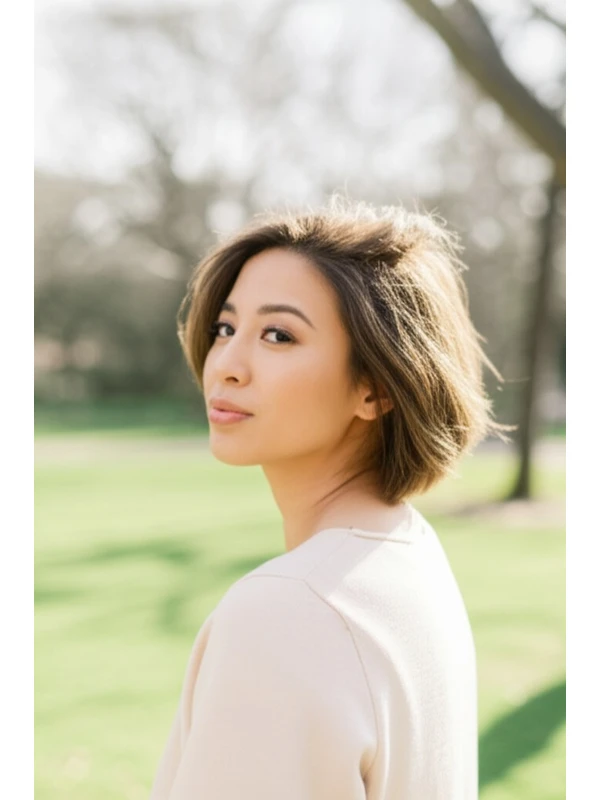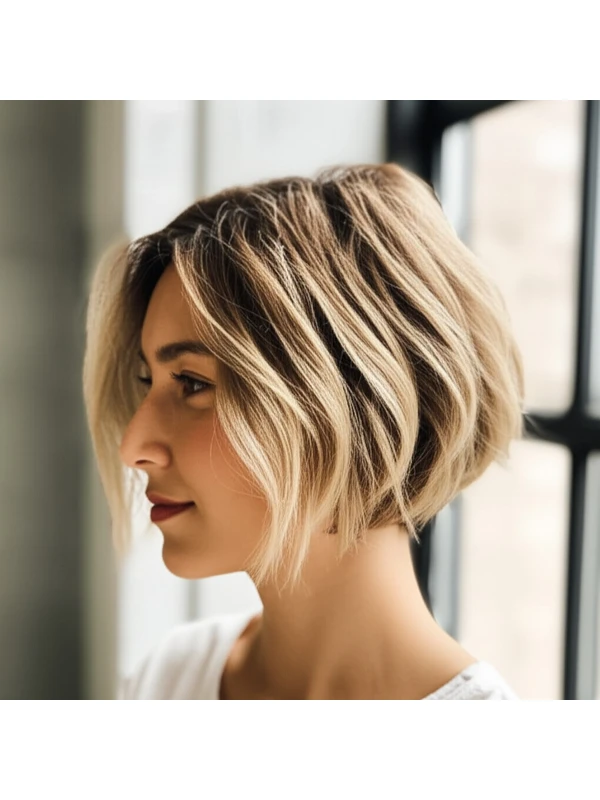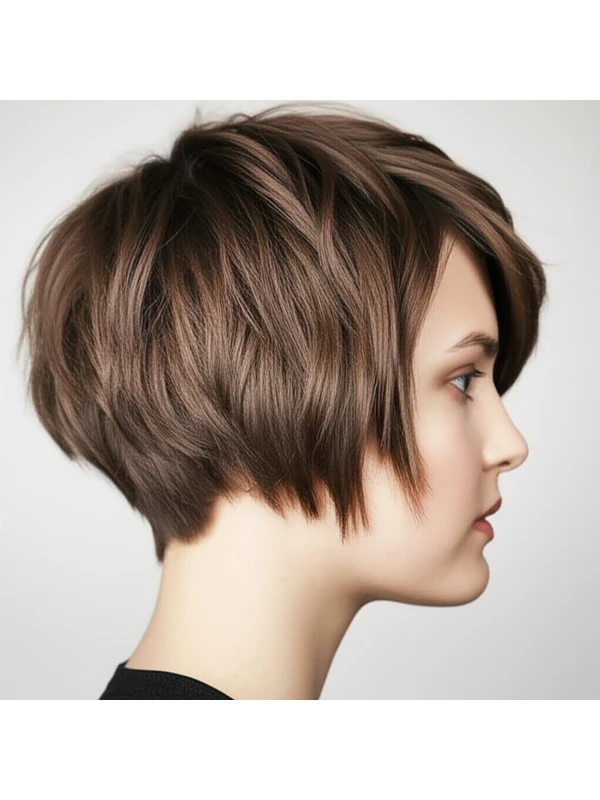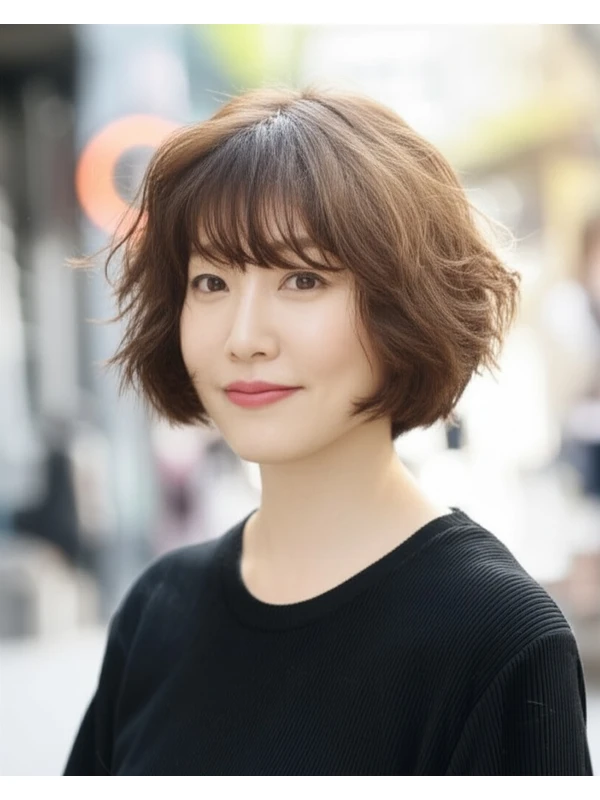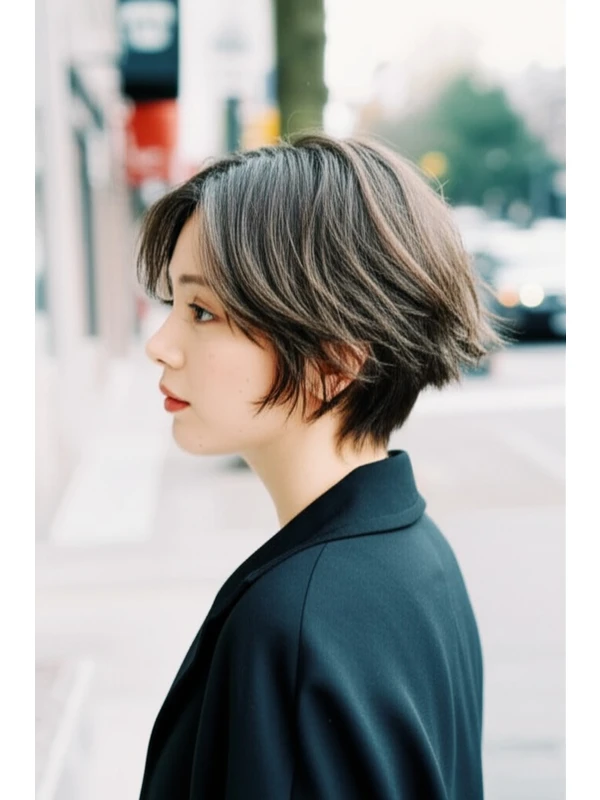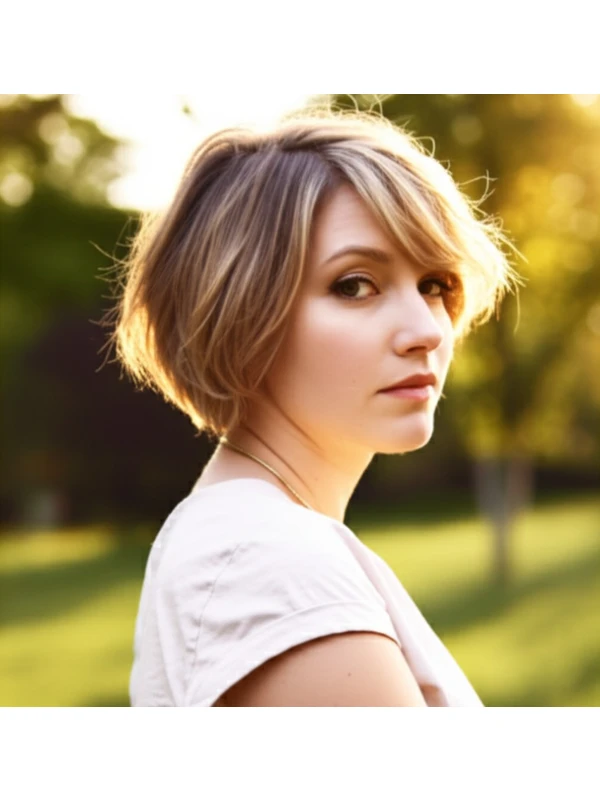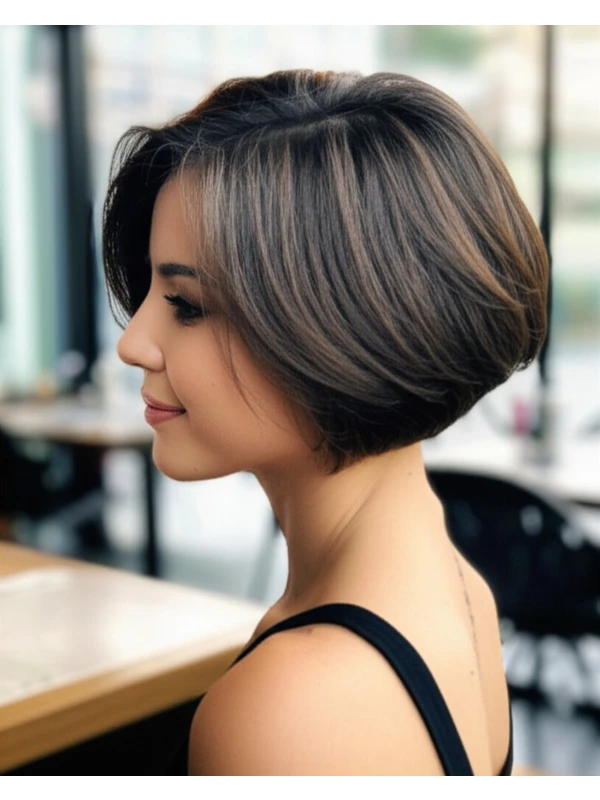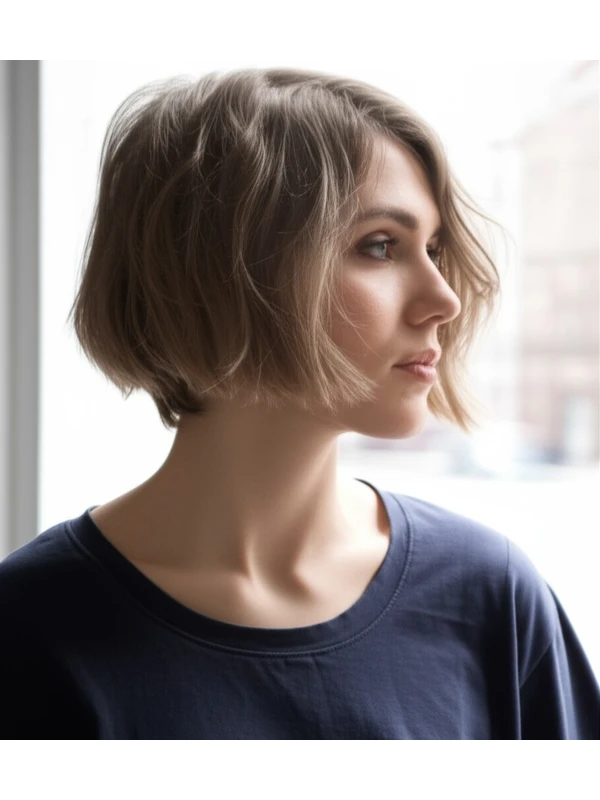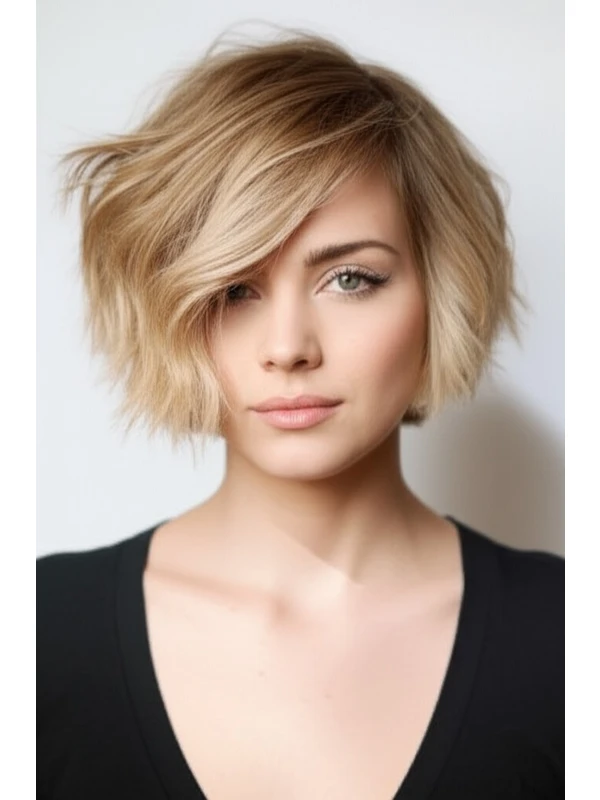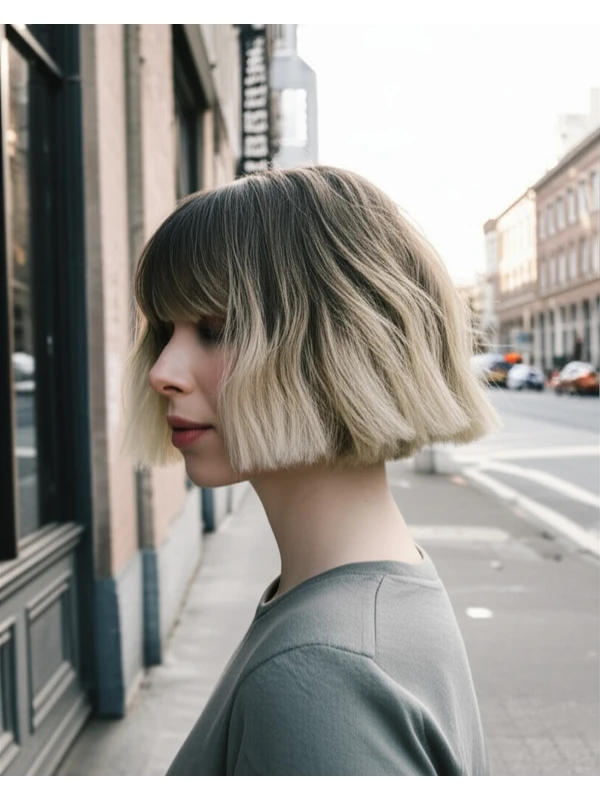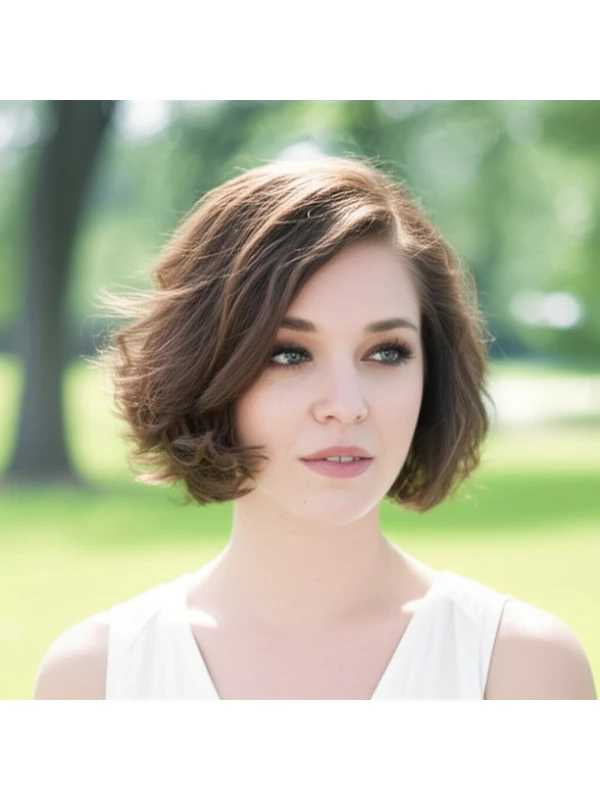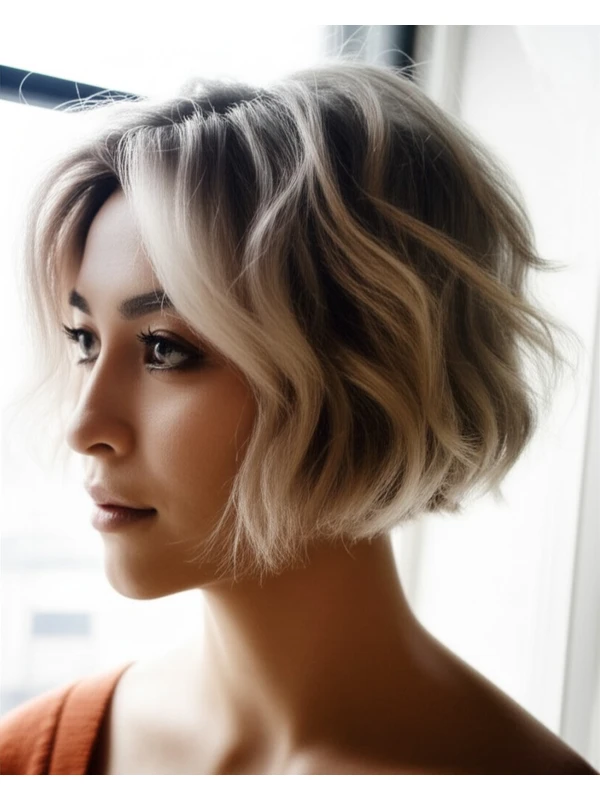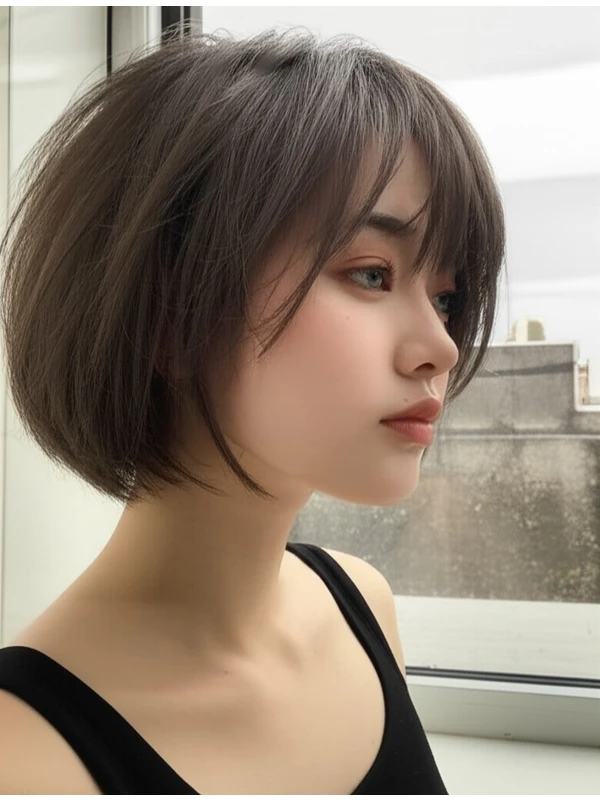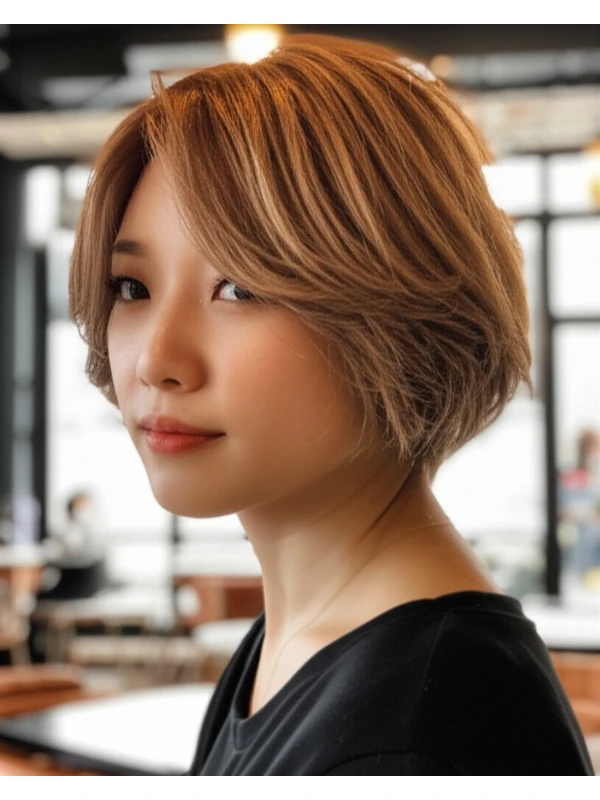#The Blunt Bob: A Modern Classic
The blunt bob is having a moment – and for good reason! It’s chic, versatile, and surprisingly flattering on many face shapes and hair types. But what exactly is a blunt bob? Let's break it down.
#1) Background & Definition: What Makes a Blunt Bob a Blunt Bob?
A blunt bob is characterized by its clean lines and lack of graduation (layers). Think of it as a solid, even wall of hair around your face. The "blunt" refers to the sharp, straight edge at the bottom – no soft angles or feathered ends here!
- Geometry: A true blunt bob has a consistent length all the way around.
- Key Features: Sharp lines, one-length appearance, minimal layering.
- Length Ranges: Typically falls between chin-length and just below the collarbone (around 6–12 inches). Shorter bobs are often called "micro bobs."
- Alternative Names: One-length bob, straight bob, stacked bob (though technically a stacked bob isn't truly blunt – it has subtle layers at the ends for volume).
#2) Face Shape Fit: Finding Your Perfect Bob Angle
The beauty of the blunt bob is its adaptability. However, certain adjustments can maximize its impact based on your face shape.
- Oval: Lucky you! An oval face is considered “ideal” and a blunt bob will look fantastic with minimal tweaking. A center part often works best.
- Fringe Option: A straight-across fringe adds boldness or a wispy, textured fringe softens the look.
- Round: The key here is to add length and create vertical lines. Opt for a slightly longer blunt bob that hits just below the chin. Avoid styles that end at the widest part of your face (cheekbones).
- Fringe Option: A side-swept fringe helps break up roundness.
- Square: Soften those angles! A blunt bob with subtle face-framing pieces can be very flattering. Slightly angling the ends away from the face is also beneficial.
- Fringe Option: Avoid harsh, straight-across fringes; opt for a softer, angled fringe or no fringe at all.
- Heart: Balance a wider forehead and pointed chin with a blunt bob that hits around the collarbone. Volume on top can add balance too.
- Fringe Option: A wispy, side-swept fringe is generally flattering.
- Diamond: A blunt bob highlights your cheekbones! Ensure the length isn't too short to avoid emphasizing a wider forehead.
- Fringe Option: A full or textured fringe can soften diamond angles.
- Oblong (Long): Similar to round faces, you want to create width. A shorter, chin-length blunt bob with some volume at the sides is ideal.
- Fringe Option: A blunt, straight-across fringe will help shorten a longer face.
#3) Body Proportions & Height Guidance: Balancing Your Silhouette
The blunt bob isn’t just about your face; it impacts your overall proportions too!
- Petite: A shorter (chin to jawline) blunt bob can prevent you from looking overwhelmed.
- Average Height: Most lengths work well – experiment with different styles.
- Tall: Longer blunt bobs (collarbone length or longer) help balance a taller frame.
- Narrow Shoulders: Adding volume at the sides of the bob creates the illusion of broader shoulders.
- Broad Shoulders: Avoid adding excessive volume at the shoulders; keep it sleek and streamlined.
- Short Neck: A blunt bob that hits just below the chin can elongate your neck visually. Longer bobs may make a short neck appear even shorter.
#4) Works Best With Hair Types & Densities: Finding Your Match
The blunt bob is surprisingly versatile, but here's how to tailor it for different hair types and densities.
- Straight: A classic choice! The sharp lines of the cut shine through beautifully.
- Wavy: Embrace your natural texture! The bluntness will enhance the wave pattern. Be mindful of shrinkage (see below).
- Curly/Coily: Can work, but requires careful consideration and potentially a longer length to accommodate shrinkage. A slightly angled bob might be more flattering than a completely straight-across cut.
- Shrinkage Factor: Curls and coils can shrink significantly after drying. Account for this when choosing your initial length – typically add at least an inch or two, depending on the curl pattern's tightness. Communication with your stylist is key!
- Fine Hair: A blunt bob creates the illusion of thickness. Avoid overly long styles that can look stringy.
- Medium Hair: This cut looks great in a variety of lengths and adds movement without being too wispy.
- Thick Hair: A blunt bob can handle thick hair, but it might require more styling to manage volume. Point cutting (removing small sections) at the ends can reduce bulk while maintaining the overall bluntness.
#5) Styling Variations: From Casual Cool to Evening Elegance
The beauty of a blunt bob lies in its versatility!
- Sleek vs. Textured: Sleek is achieved with smoothing products and heat styling. Texture can be created by air-drying, using texturizing sprays, or scrunching.
- Middle vs. Side Part: A center part creates symmetry; a side part adds softness and volume.
- Fringe Variations: Straight-across, wispy, angled – the possibilities are endless!
- Occasion Styling:
- Casual: Air-dried with minimal product for effortless cool.
- Office: Sleek and polished with a serum or oil.
- Evening: Add waves with a curling iron or create an updo by pinning back sections.
#6) Maintenance: Keeping Your Bob Sharp
Regular trims are essential to maintain the blunt line!
- Trim Cadence: Every 6-8 weeks, depending on your hair growth rate and desired sharpness.
- At-Home Routine: Gentle shampoo & conditioner (see product checklist). Consider a deep conditioning mask once a week for moisture.
- Heat vs Air Dry: Heat styling will create a smoother finish; air drying enhances natural texture.
- Product Checklist:
- Shampoo & Conditioner: Tailored to your hair type.
- Leave-In Conditioner: For hydration and detangling (especially important for wavy, curly, or coily hair).
- Styler: Smoothing serum/oil (for sleek styles), texturizing spray (for textured looks).
- Finishing Product: Hairspray to lock in your style.
- Estimated Daily Styling Time: 15-30 minutes (can be shorter with air drying).
#7) Grow-Out Roadmap: Evolving Your Look
The blunt bob doesn’t just disappear as it grows; it transforms!
- Months 1-3: The shape remains consistent. Focus on maintaining the sharp lines with regular trims.
- Months 3-6: As hair grows, layers may become more noticeable (especially if you have wavy or curly hair). Consider a slight re-shape to maintain the desired bluntness.
#8) Color Pairings: Enhancing Your Bob’s Impact
Color can elevate your blunt bob from good to stunning!
- Shades that Elevate: Rich, dimensional colors like caramel highlights, chocolate lowlights, or even an all-over gloss will create depth and movement.
- Cool Undertones: Ashy blondes, cool browns, plums.
- Warm Undertones: Honey blondes, golden browns, copper tones.
- Low-Commitment Options: Gloss treatments add shine and tone without permanent color changes.
#9) Season & Occasion Guide: Styling for Every Moment
- Spring/Summer: Lighter styling products, air-dried textures, brighter colors.
- Fall/Winter: Deeper tones, sleek styles, more moisturizing products to combat dryness.
- Work: Sleek and polished; minimal fuss.
- Weddings: Elegant updo or half-up style.
- Parties: Textured waves or a playful side part.
- Formal Events: A sophisticated, straightened look with added shine.
#10) Cost & Time: What to Expect at the Salon
The blunt bob is generally considered a straightforward cut, but pricing can vary based on location and stylist experience.
- Salon Time: 45-90 minutes
- Estimated Price Range: Relatively moderate – expect slightly higher than a basic trim, but less than more complex layered styles.
#11) Pros & Cons: Weighing the Options
Pros: Chic, versatile, flattering on many face shapes, relatively low maintenance (with consistent trims). Cons: Can look harsh if not styled correctly, requires regular trims to maintain shape, might not be ideal for all curl patterns without adjustments.
#12) Salon Consultation Script: Questions to Ask Your Stylist
- "I'm interested in a blunt bob. What length do you recommend based on my face shape and hair type?"
- "Can we discuss how the cut will work with my natural texture/hair density?"
- "What styling products would you suggest for maintaining this style at home?"
- “How often should I come back for trims to keep the blunt line sharp?”
#FAQs: Your Blunt Bob Questions Answered
- Can a blunt bob work with curly hair? Yes, but it requires careful planning and potentially a longer length to accommodate shrinkage.
- Is a blunt bob high maintenance? It depends! Regular trims are essential, but daily styling can be minimal if you embrace your natural texture.
- What if I want layers in my blunt bob? While technically not a "true" blunt bob, subtle face-framing pieces or point cutting at the ends can add dimension and reduce bulk.
- Can I do this myself at home? It’s risky! A professional stylist is best equipped to achieve the precise lines of a blunt bob.
- What if my hair doesn't lie flat when I air dry it? Experiment with different leave-in conditioners and styling products to encourage your natural texture while maintaining the shape.
- How do I prevent my blunt bob from looking boxy? Subtle face-framing or a slight angle at the ends can soften the look.
Enjoy your new, chic blunt bob!
